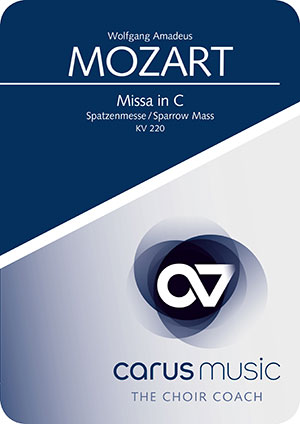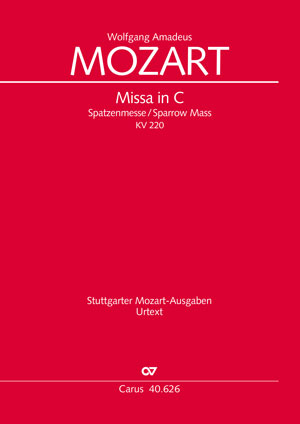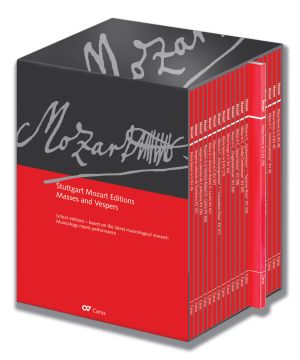
Dans la Missa in C de Mozart, les moineaux gazouillent dans la partie de violon du "Sanctus". Mais malgré son caractère populaire, la Messe présente aussi quelques écueils pour les choristes, notamment dans le "Kyrie" et le "Gloria" : dans le premier, le "eleison" est orné de suites joyeuses de doubles croches qui terminent en modulation – c’est alors une bonne chose de pouvoir écouter cette mélodie lentement avec l’application. Dans le "Gloria", le "Qui tollis" est marquant : on maîtrise vite le chromatisme en écoutant l’ensemble avec l’application.
Il suffit de s'exercer. Partout. A tout moment.
Que ce soit à la maison sur votre tablette ou votre PC ou en déplacement sur votre smartphone : avec carus music, the Choir Coach, vous avez toujours vos œuvres chorales avec vous pour vous entraîner ! Avec l'application chorale de carus music, vous pouvez écouter votre partition ainsi qu'un enregistrement de première qualité sur n'importe quel appareil et vous entraîner facilement à votre propre partie de chœur avec un coach. Avec carus music, la préparation de vos concerts est facile, efficace et amusante à maîtriser !
Interprètes: Angela Maria Blasi (soprano), Elisabeth von Magnus (alto), Uwe Heilmann (tenore), Franz-Josef Selig (basso) – Arnold Schoenberg Chor, Concentus musicus Wien – Nikolaus Harnoncourt
-
Compositeur
Wolfgang Amadeus Mozart
| 1756-1791As the son of the deputy Kapellmeister to the Salzburg Prince-Archbishop, Mozart was constantly surrounded by church music in his youth. On his travels Mozart became familiar with Italian church music, and later in Vienna he studied the works of Bach and Handel. After moving to Vienna he was faced with the new challenges of composing opera and piano concertos, and significantly the “C Minor Mass” KV 427, the greatest sacred work of the first Vienna years, remained unfinished. The last period of his life again shows a change of direction to church music: Mozart successfully applied to succeed the terminally ill Leopold Hoffmann as Kapellmeister at St Stephen's Cathedral, but he was unable to take up the position as he died before Hoffmann. A gem such as the “Ave verum” KV 618 and the incomplete Requiem KV 626 give us an idea of what Mozart might have achieved as a composer of sacred music if he had taken up this important position. Plus d'information sur la personne
-
Ensemble
Arnold Schönberg Chor
-
Ensemble
Concentus musicus Wien
-
Chef d'orchestre
Nikolaus Harnoncourt
| 1929
-
Solist - alto
Elisabeth von Magnus
-
Solist - ténor
Uwe Heilmann
-
Solist - basse
Franz-Josef Selig
Questions fréquentes sur l'œuvre
 Il n'y a pas encore de questions et réponses concernant cette œuvre ou vous n'avez pas trouvé la réponse à votre question sur l'œuvre ? Cliquez ici et envoyez votre question spécifique à notre service clients.
Il n'y a pas encore de questions et réponses concernant cette œuvre ou vous n'avez pas trouvé la réponse à votre question sur l'œuvre ? Cliquez ici et envoyez votre question spécifique à notre service clients.





